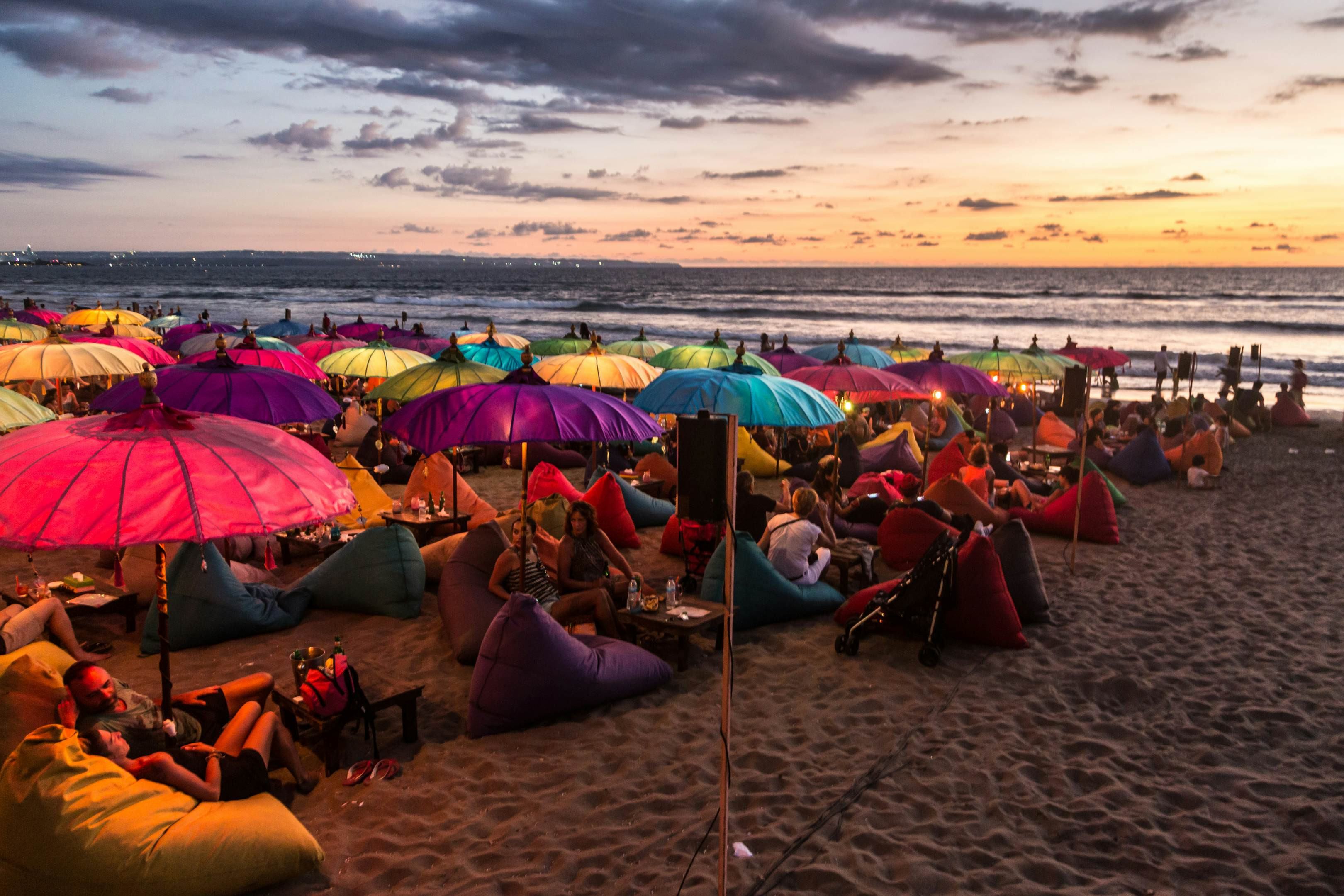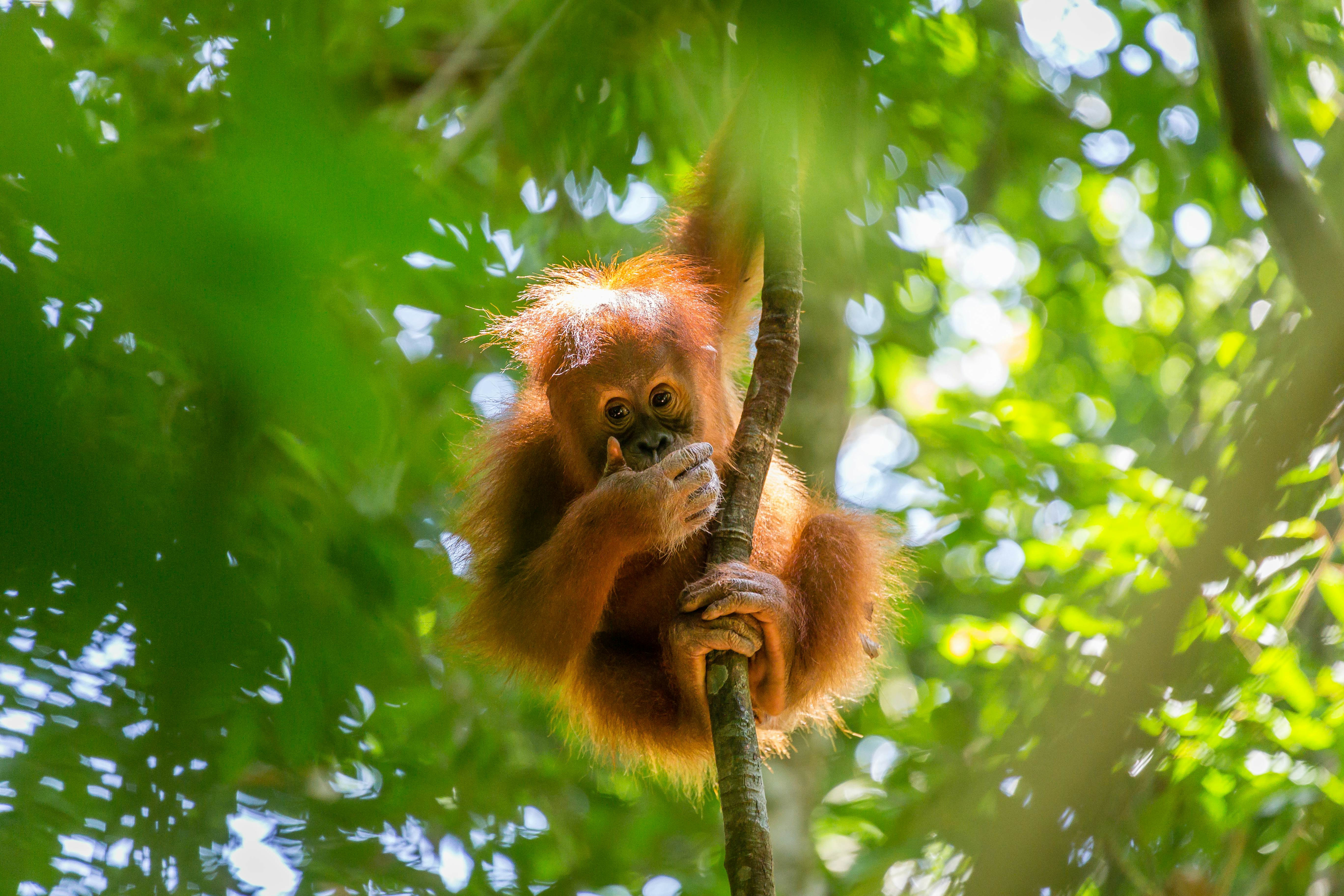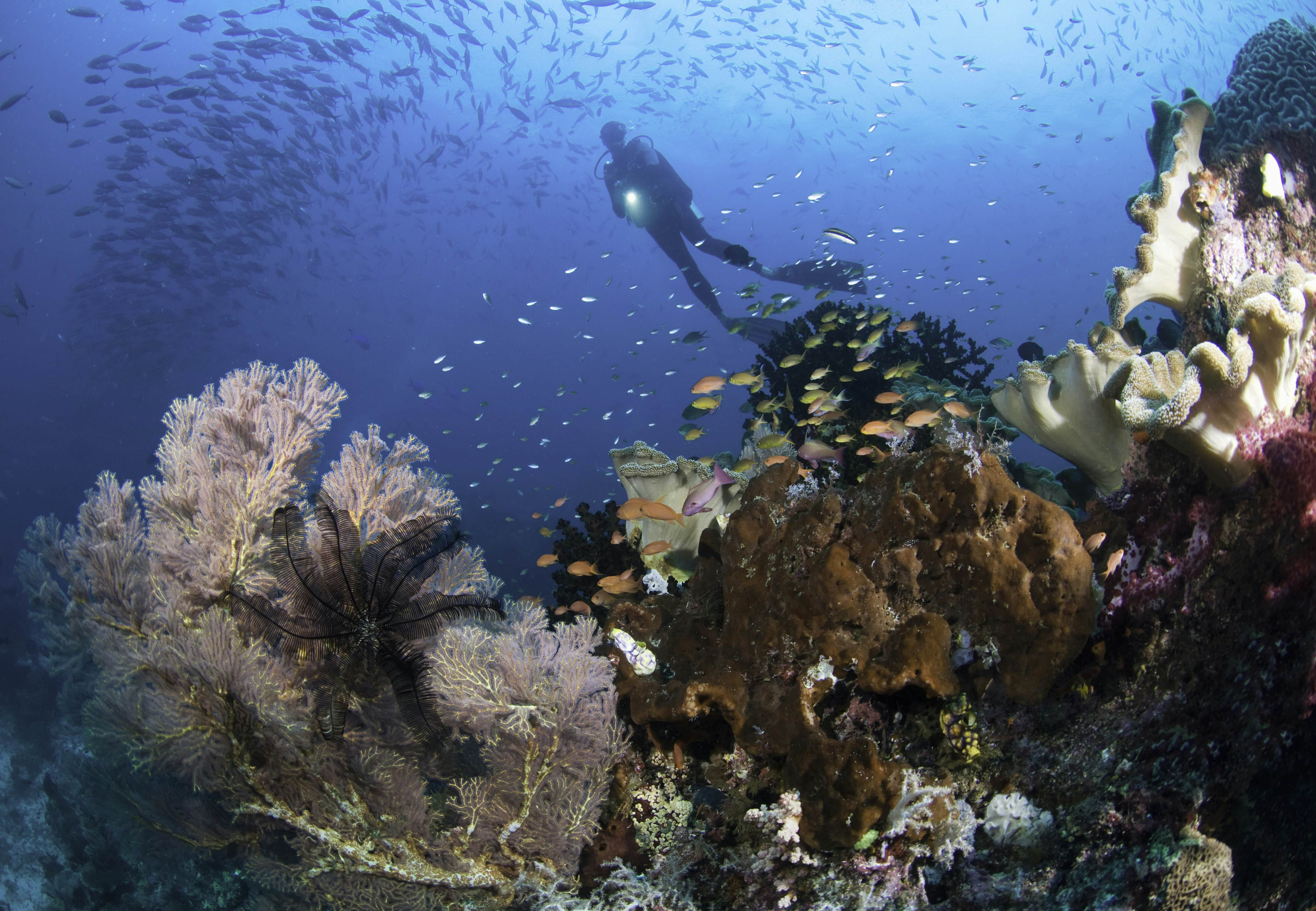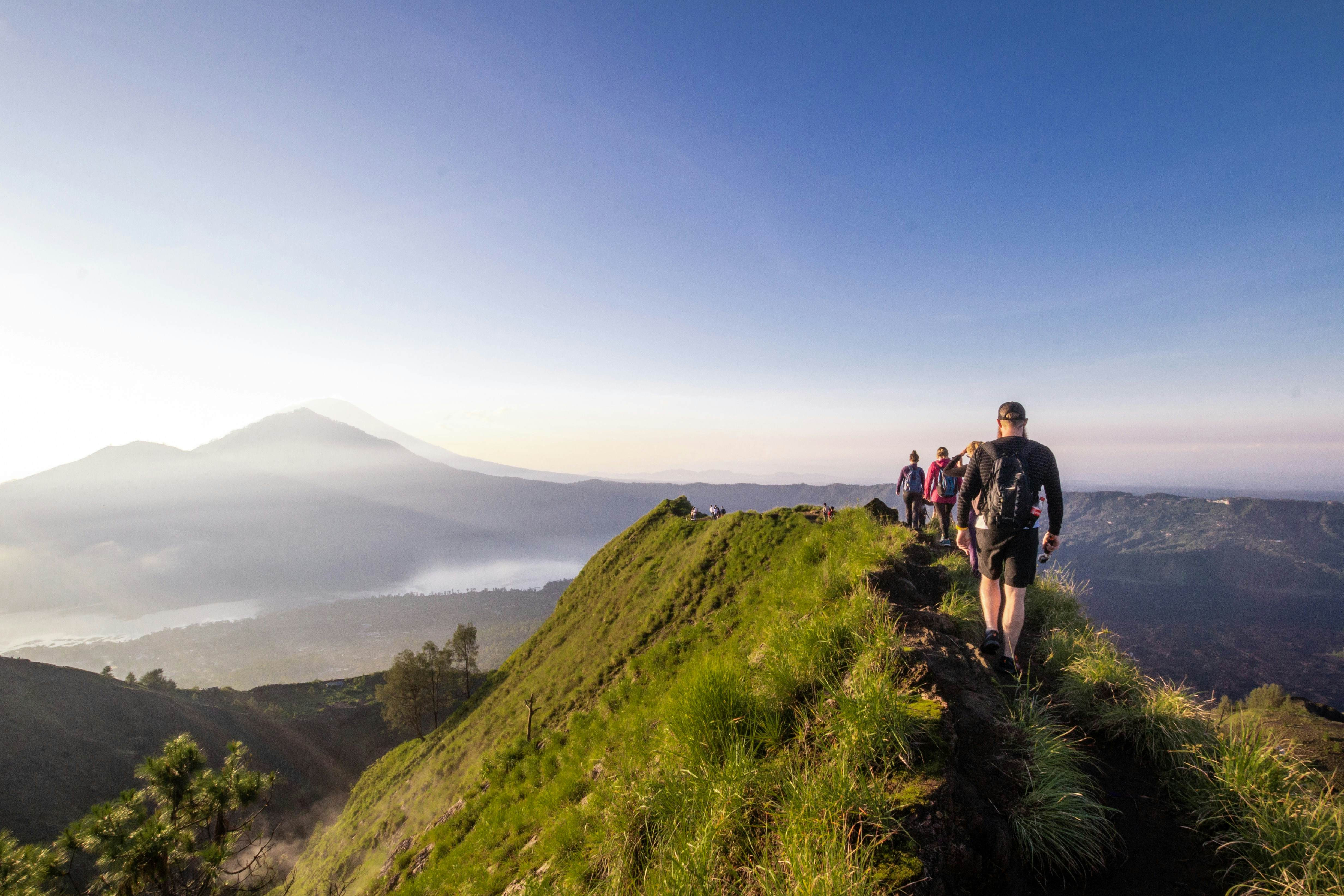Indonesia, a vast archipelago, once experienced predictable wet and dry seasons. However, climate change and phenomena like El Niño and La Niña have introduced more variability. Despite these shifts, it’s often said that there’s never truly a bad time to travel to Indonesia. The “Best Time To Travel To Indonesia” actually depends on what you seek – be it perfect waves, volcanic climbs, orangutan encounters, vibrant festivals, or simply fewer crowds.
Whether you’re drawn to pristine beaches, lush jungles, or cultural festivities, this guide will help you navigate the seasons and pinpoint the ideal time for your Indonesian adventure.
 A crowd of people share food and drink under colourful umbrellas during sunset on a beach
A crowd of people share food and drink under colourful umbrellas during sunset on a beach
Beach Bliss and Bustling Vibes: Indonesia’s High Season (July–August, Christmas & New Year’s)
The high season in Indonesia, particularly July and August, perfectly aligns with sunny skies and coincides with European summer holidays and the Australian winter, resulting in a surge of tourists across the islands. If you thrive in lively environments, this is a fantastic time to visit. Bali and Lombok are especially energetic, with beaches and bars teeming with people. This period is also ideal for trekking, surfing, diving, and exploring Indonesia’s stunning outdoors in most areas. However, keep in mind that West Papua and Maluku experience their rainy season in July and August.
The peak season’s vibrancy comes with drawbacks: crowded surf spots, packed attractions, busy trails, and increased traffic, alongside higher prices for accommodations and flights. Booking well in advance is crucial to secure better rates and availability. The Christmas and New Year period also sees a similar peak in tourism and prices, marking another high point of the high season.
 An orangutan hanging in a tree covering its mouth in the wilds of Indonesia
An orangutan hanging in a tree covering its mouth in the wilds of Indonesia
Nature and Value: Indonesia’s Shoulder Season (March–June & September–November)
The shoulder seasons, spanning March to June and September to November, offer a compelling blend of pleasant weather, fewer tourists, and more affordable prices, making them arguably the best time to travel to Indonesia for many. While some rain is possible, especially in March and November, you’re more likely to encounter glorious sunshine.
During these months, conditions are often optimal across the archipelago. Waves are excellent for surfing, orangutans are more visible in the jungles of Sumatra and Kalimantan, and divers have increased chances of spotting whale sharks and mola mola (sunfish), particularly from June to September. The shoulder seasons are also perfect for volcano trekking in Indonesia, offering favorable hiking conditions without the peak season crowds.
A potential downside of the September to November shoulder season is the occasional smoke haze from agricultural fires in Sumatra and Kalimantan. Travelers with respiratory sensitivities should consider this factor when planning their trip during this period.
 A scuba diver shines a light on a reef covered with colorful corals and vivid fish
A scuba diver shines a light on a reef covered with colorful corals and vivid fish
Budget-Friendly Exploration: Indonesia’s Low Season (January–February)
The wet season, from January to February, often deters visitors seeking constant sunshine. However, traveling to Indonesia during this low season can be rewarding for budget-conscious travelers. While humidity is high and rain showers are frequent, they are typically short and intense, followed by the return of blue skies and sunshine.
Tourist numbers significantly decrease during the wet season, resulting in a more relaxed atmosphere and widespread discounts on accommodations and tours. This is an excellent time to immerse yourself in local culture and explore temples in Java and Bali with fewer crowds. However, hiking is generally not recommended as many volcanoes are closed from December to March. Wildlife sightings, including orangutans, can also be less frequent during the rainier months.
For those seeking drier conditions within Indonesia during this period, West Papua and Maluku experience their dry season in January and February. These months are ideal for exploring remote villages or diving in the exceptional reefs of Raja Ampat, where calm seas and excellent visibility create perfect underwater conditions.
 A group of hikers follow a narrow trail atop a mountain ridge in single file. Other peaks, covered in mist, are visible in the distance
A group of hikers follow a narrow trail atop a mountain ridge in single file. Other peaks, covered in mist, are visible in the distance
Bali’s Best Window: When to Visit the Island of Gods
For many, Indonesia and Bali are synonymous. The best time to visit Bali aligns with the shoulder seasons, specifically May to June and September. These months offer a sweet spot of superb beach weather, fantastic waves, incredible volcano treks, stunning waterfalls, yoga retreats, and rich Hindu culture, all without the overwhelming crowds of peak season. Furthermore, you can often find better deals and avoid the need for booking months in advance compared to the high season.
Rainy Season Realities: Will it Spoil Your Trip?
Traveling to Indonesia during the rainy season can be a worthwhile option if you prefer a more laid-back vacation and appreciate better deals. While downpours are expected from December to February, they are usually not continuous. Expect a few hours of rain, often in the afternoon, followed by sunshine, allowing you to still enjoy poolside relaxation and other activities. However, if your primary focus is trekking, diving, surfing, and wildlife viewing, planning your trip during the drier months from April to October is advisable.
Ultimately, determining the best time to travel to Indonesia depends on your personal preferences and priorities. Whether you seek sunshine and bustling beaches, cultural immersion and budget savings, or nature encounters and tranquility, Indonesia offers appealing experiences throughout the year.

